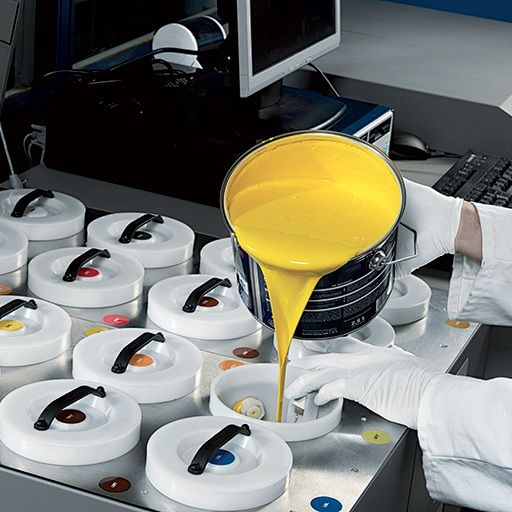Welcome to our company!

Coatings widely used in industrial fields are mainly composed of the following chemical components: solvents, resins, pigments, auxiliaries and additives.
First, the solvent. Solvents are one of the main components in industrial paints and are used to disperse and dilute resins and pigments to make the paint fluid. Common industrial paint solvents include organic solvents and water solvents. Organic solvents are mainly low-boiling organic compounds obtained by refining petroleum, such as benzene, toluene, xylene, etc. Water solvents refer to solvents with water as the main component, such as water-based emulsion paint.

Next is resin. Resins are the binders in industrial paints and are responsible for firmly adhering the pigments to the coating substrate. The choice of resin determines the performance of the coating, mainly polymer resins, natural resins and synthetic resins. Polymer resins are divided into two types: solvent-based resins and solvent-free resins. Solvent-based resins such as ketone-alcohol resin, alkyd resin, etc., and solvent-free resins such as epoxy resin, polyester resin, etc. Polymer resins have good adhesion and weather resistance and are widely used in industrial paints. Natural resins such as rosin, natural gum, etc., and synthetic resins such as phenolic resin, acrylic resin, etc.
Next comes the paint. Pigments are the solid particles in industrial paints that are responsible for providing color and protective properties to the paint. Pigments can be divided into two categories: organic pigments and inorganic pigments. Organic pigments are mostly organic dyes or organic pigment particles, which have good tinting power and chemical stability. Inorganic pigments are mainly inorganic particles such as metal oxides and metal powders, which have good weather resistance and hiding power.
Auxiliaries and additives are also important ingredients in industrial paints. Additives are mainly used to improve the performance of coatings, such as increasing rheology and gloss. Common additives include leveling agents, thickeners, anti-foaming agents, etc. Additives are used to change the characteristics of the coating, such as increasing fire resistance, UV resistance, etc. Common additives include fire retardants, anti-UV agents, etc.
In short, the main chemical components of industrial paints include solvents, resins, pigments, auxiliaries and additives. Through their respective functions, they can form a coating film that is used to protect the surface of the substrate, increase the decorative effect and meet specific usage requirements.
Leave A Message
If you are interested in our products and want to know more details, please leave a message here, we will reply you as soon as we can.
